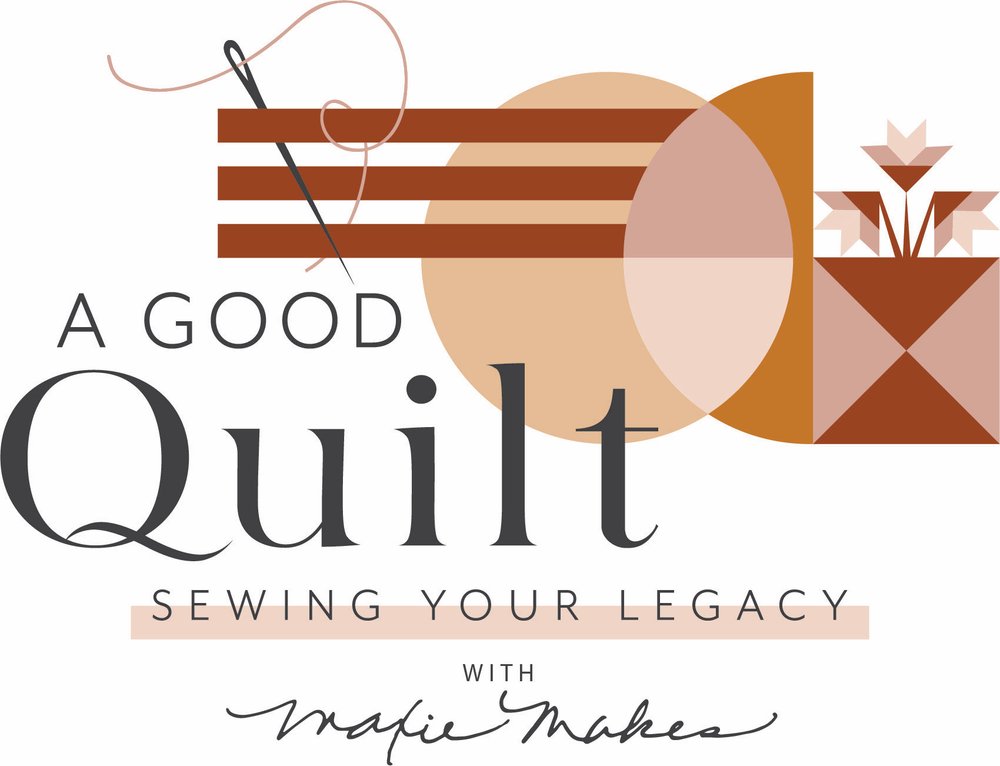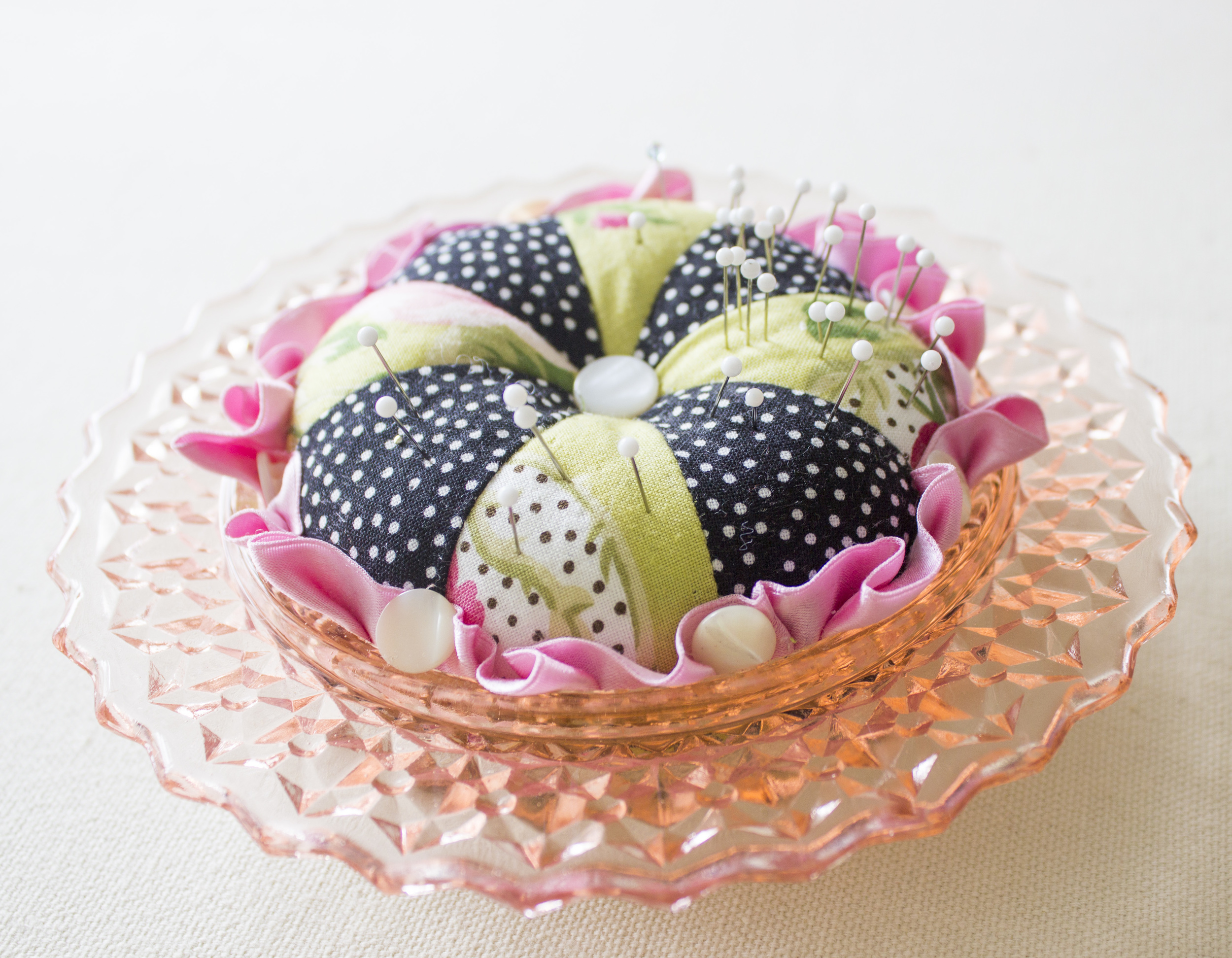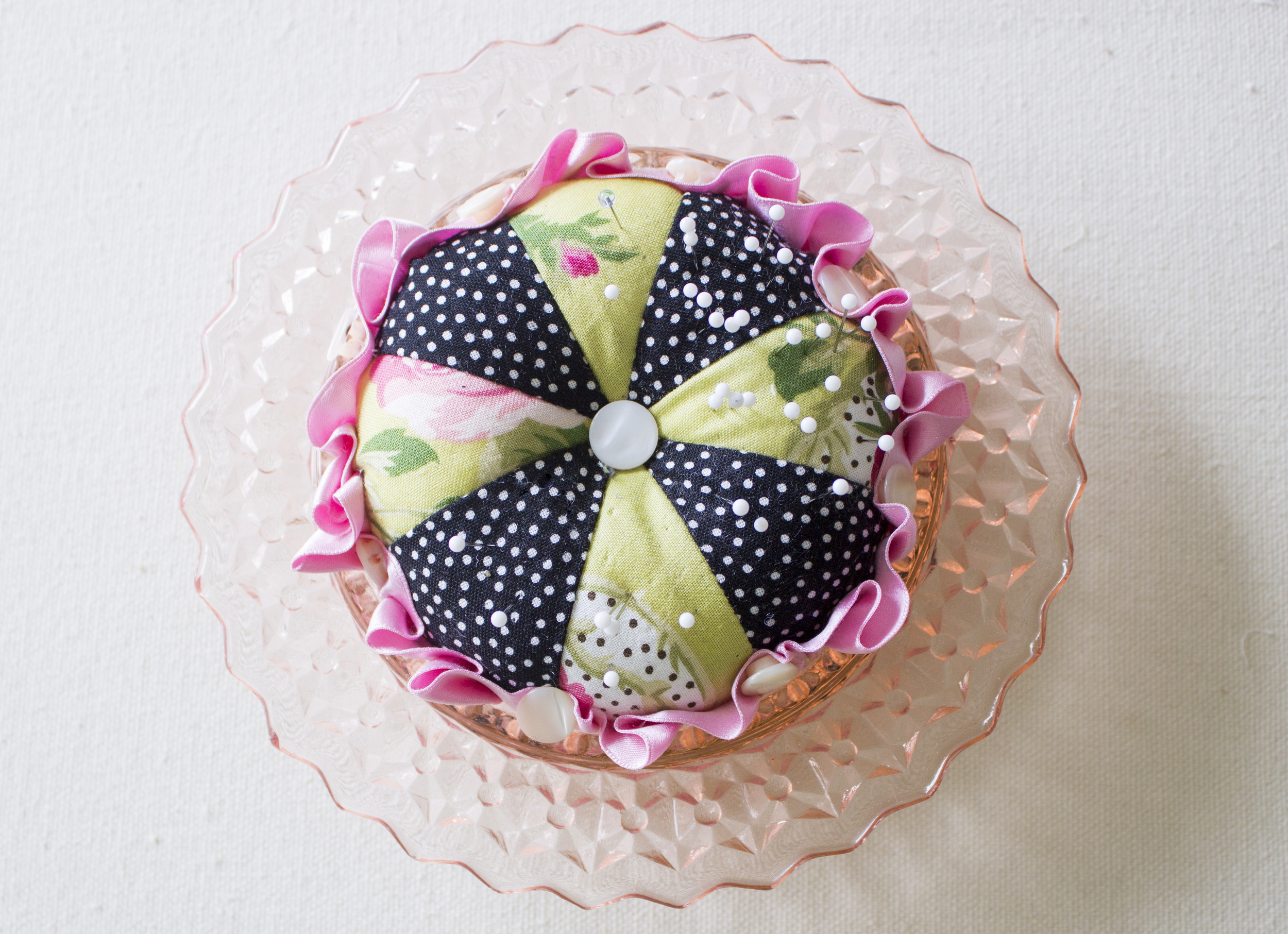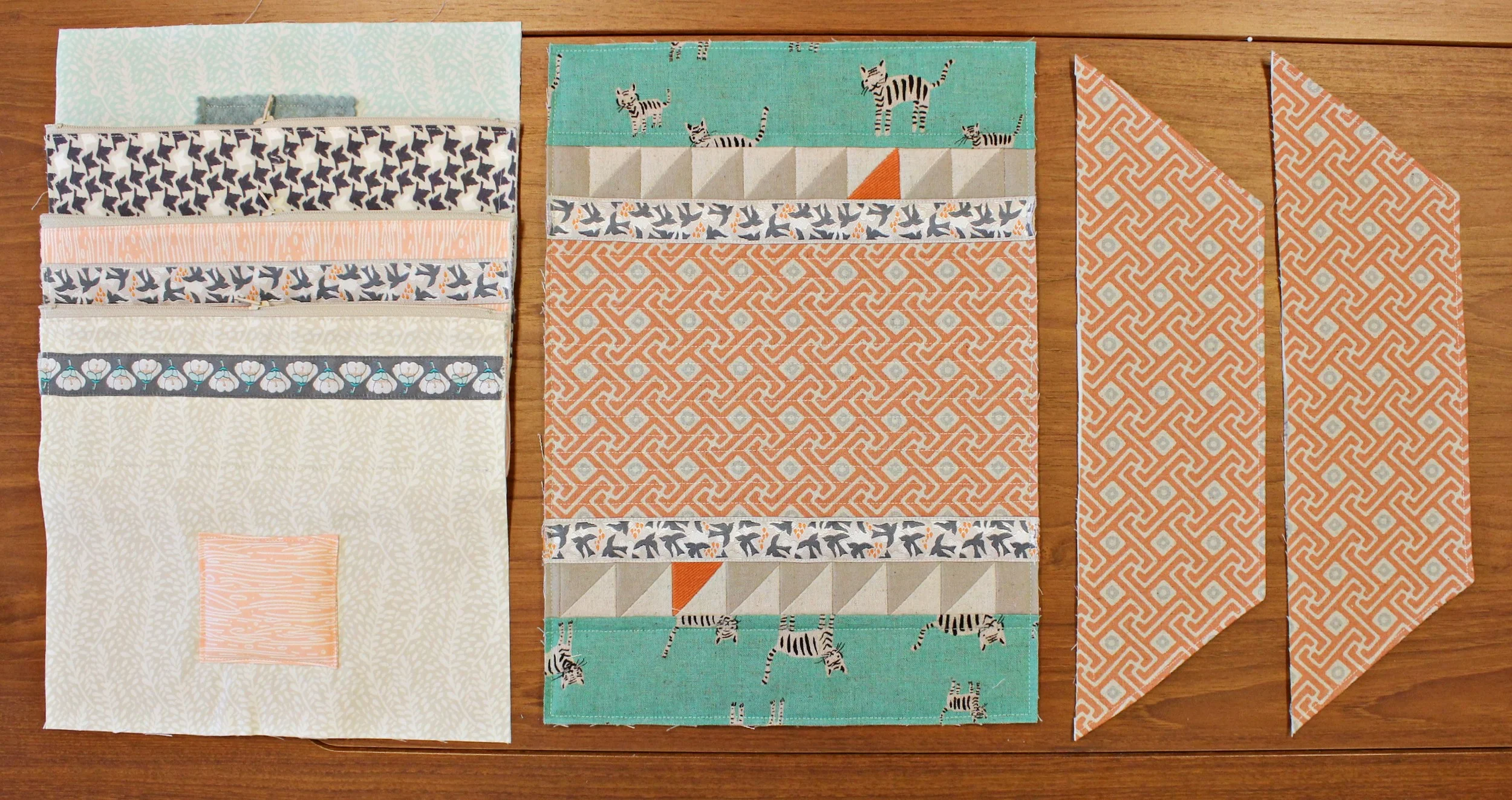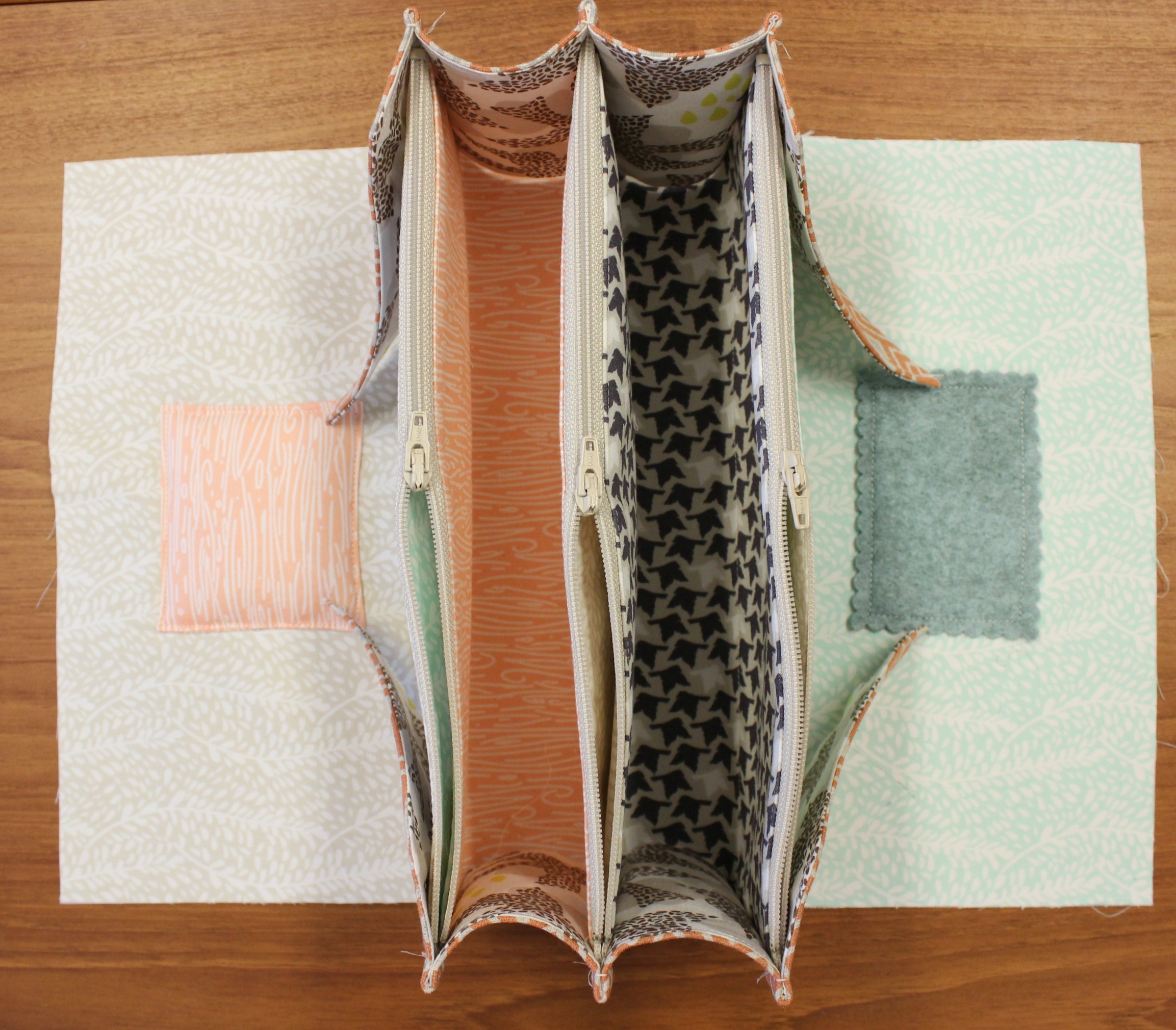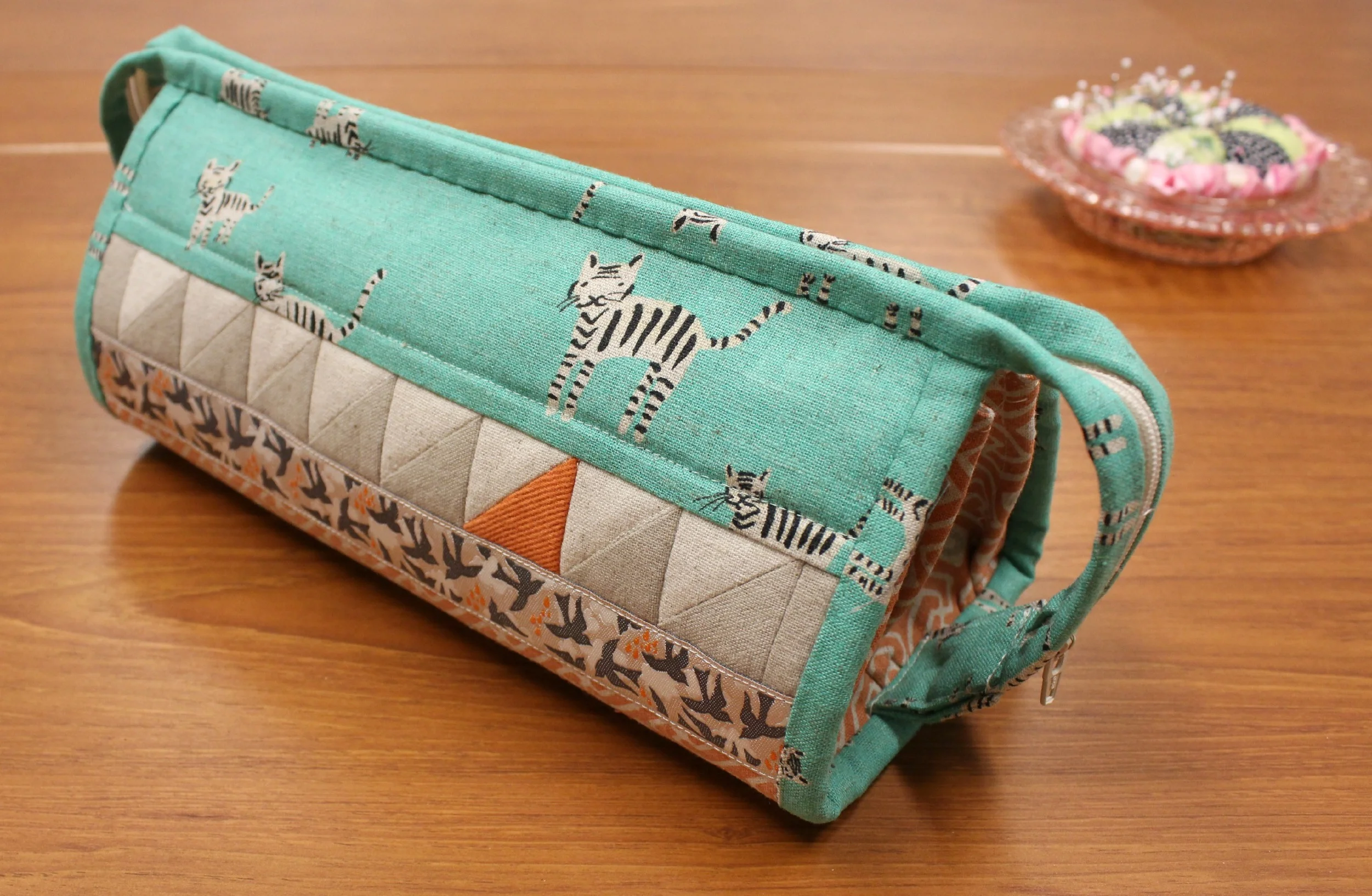Take a break from the sewing machine today. Make something a little more beautiful, with your hands. I'll show you how to make a Spider Web Rose! They are so easy, much easier than they look and they only take a minute to make.
The little bouquet above includes three roses amongst a couple of lazy daisies and french knot hydrangeas. I've made a pincushion, but they would be lovely just about anywhere you wanted to stitch them...on a pocket, a shirt collar, a broach or a pillow (like this one that was my inspiration).
You can stitch these roses with just about any kind of thread or ribbon. Silk ribbon in any width gives wonderful results!
So, let's get started! The first thing is to gather an embroidery needle, floss, matching thread and scissors. Just about any kind of needle with a large eye will do. I'm using a large milliner's needle. Thread it with a thread that matches the embroidery thread or ribbon that you will use for the rose. For instructional purposes, I've used black thread in the photos below.
- Begin to make a 'Y' shaped stitch by bringing the thread up from the back. Take the needle down again, about 1/4" to the right, and then back up again, forming a triangle with your needle 'stabs' (first photo). Let this last stitch pass through the thread loop (first photo).
- Take the thread to the back again, forming a 'Y' shape (middle photo).
- Bring the needle back up at the center of the 'Y'. Make a stitch towards the left, evenly dividing the space between the 'Y' stitches on the left. Repeat for the right side. You should have 5 (fairly) evenly spaced stitches. This is called a 'fly' stitch.
Remember that the black thread is to help you visualize the process. I used pink thread in the actual project.
- Using all 6 strands of embroidery thread, bring the thread up from the back, center position.
- Begin to weave the floss around the fly stitch, passing over and under each stitch.
- Over and under, around and around. Because you used 5 stitches, (an odd number) the weaves will alternate on each stitch.
A Rose is a Rose is a Rose!
Won't you give hand embroidery a try? It's portable, relaxing and rewarding! Thanks for visiting! Happy sewing and God bless. Maxie
